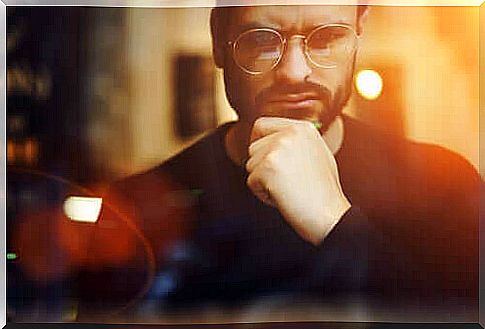The Einstellung Effect Or The Difficulty Of Thinking Differently

The Einstellung effect is above all a cognitive trap in which we frequently fall. This happens, for example, when we try to solve a problem and, analyzing it thoroughly and carefully, we take it for granted that such a challenge has no solution. We think so because our brains reason rigidly and are unable to take on new perspectives.
To better understand this, let’s imagine an expert in some field trying to solve a sudden challenge. He analyzes the question, turns it over a hundred times and examines it from a thousand different prisms. At one point, a stranger arrives, observes the circumstances and suddenly comes up with an almost dazzling solution. One that the “wise man” hadn’t even considered.
What happened ? What happens in this type of situation is that sometimes we manifest what is called “hyperspecialization” of knowledge. That is, we master a series of approaches, subjects and patterns of knowledge without leaving room for other possibilities, without even questioning ourselves or exploring new perspectives through lateral thinking.
Likewise, there is one fact that we must clarify: the Einstellung effect does not define a personality type. It’s kind of a mental strategy. Basically, this is a way our brain works that always tend to give the same type of answers and solutions. It is very difficult for us to innovate, to be original and it is without a doubt a big problem.

The Einstellung effect or the cognitive shortcut that blocks our mind
If I have my own strategies for solving the problems, why waste time trying other approaches? This sentence sums up very well this mental shortcut with which we face many of our problems.
In a way, we do this because human beings incorporate a lot of preconceived ideas, those with which we “work” on a daily basis, those which save us time and make us feel efficient.
However, every now and then something happens. There are things going on that challenge us to prove something very concrete to us: our prior knowledge often hinders the possibility of applying more creative and original approaches. It can be boiled down to the classic idea that it is better to have a known evil than certain happiness, while showing us something very striking: our brains work by habits.
It will always give more value to what is stored in our experience than to the possibility of improvising, of trying other things. That’s why we say, “I’ve always done this” rather than “let’s try and see what happens”.
The great experts are less creative ( Einstellung effect )
The Einstellung effect was first described in 1942 by Dr. Abraham Luchins. He demonstrated something that may interest us: the best experts in a field are sometimes those who use the least creative and innovative thinking… How is this possible?
The more experience we have in something, the harder it is for us to question ourselves. We settle into a kind of very fierce cognitive pattern where we trust our experiences.
This means that sometimes the presence of a “non-expert” in this area of knowledge, is able to bring fresher and more original ideas, adding sudden value to our perspectives.
Something curious, but undoubtedly frequent.

Start with you: develop more flexible thinking
We’ve all heard of lateral thinking, the flexible mind, the value of creativity, and the need to innovate. We know that it is necessary to use and express these dimensions, that their application to our work, our way of life and our way of thinking would greatly improve the well-being and even the progress of our society.
However, you have to admit one thing: these changes are not always appreciated. In many work environments, the status quo is more important than “doing what we always do because it works”. This explains why the Einsellung effect is that constant Cinderella that forces us to react to different problems with the usual solutions, thus rusting any progress.
What can we do ? In reality, we could make multiple changes. Starting with yourself is essential to encourage others, to create a reality that is more innovative, more flexible and more open. These are some things to think about.
How to reduce the Einstellung effect ?
- When it comes to problem solving, don’t just stick to the first ideas that come to mind. Be able to broaden your approach
- Cultivate knowledge, expand your knowledge. You may be an expert in some areas, but exploring others will help you broaden your horizon in terms of perspectives, and also, to put things into perspective.
- Control the reactions of your mind and avoid conformism. It is very common for us to say things like “I know this all too well”. “Why try any other way when I know it works”… It is this kind of thinking that erects the Einstellung effect . Let’s avoid them
- Dare to unlearn certain things in order to learn them from other perspectives and approaches
- Listen to those around you, be attentive to points of view opposed to yours, encourage yourself to improvise, to train the creative muscle of your mind
In conclusion, the use of a lateral, more open, flexible and original approach takes time. We need to re-educate our brain, invite it to stop clinging so much to preconceived ideas and to turn to novelty, so that we can continue to learn and grow.










